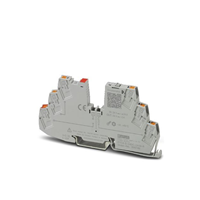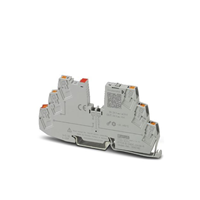PTCB Series, Circuit Breakers
Results:
19
Manufacturer
Series
Current Rating (Amps)
Actuator Type
Approval Agency
Illumination Voltage (Nominal)
Voltage Rating - DC
Voltage Rating - AC
Illumination
Number of Poles
Breaker Type
Mounting Type
Results remaining:19
Applied Filters:
PTCB
About Circuit Breakers
A circuit breaker is an automatically operated electrical switch designed to protect an electrical circuit from damage caused by excess current from an overload or short circuit. It serves as a crucial safety device in electrical systems by interrupting the flow of current when a fault occurs.
When an abnormal current condition such as an overload or short circuit occurs, the circuit breaker detects it through a built-in sensing mechanism. This mechanism is typically based on magnetic or thermal principles. The sensing element monitors the current passing through the circuit and triggers the circuit breaker to trip when it exceeds a predetermined threshold.
Upon detecting a fault, the circuit breaker swiftly interrupts the flow of electricity by opening its contacts. This action effectively isolates the faulty section of the circuit, preventing further damage to the system or potential hazards like fires or electrocution. By cutting off the current flow, the circuit breaker protects sensitive equipment and wiring from excessive heat and prevents the risk of electrical fires.
One of the significant advantages of a circuit breaker over a fuse is its ability to be reset. After a fault has been resolved, the circuit breaker can be manually or automatically reset to restore normal operation. This feature eliminates the need for replacement, as is the case with fuses that must be replaced after they operate. It saves time and cost associated with replacing fuses, making circuit breakers a more convenient and economical choice.
In addition to their protective function, circuit breakers also provide selective coordination in complex electrical systems. They are designed with various ratings, including current rating, voltage rating, and fault-breaking capacity, to suit different applications and ensure optimal performance.
Overall, circuit breakers are indispensable components in electrical systems, safeguarding against overloads and short circuits while offering the flexibility of resetting for uninterrupted operation. Their ability to protect valuable equipment and prevent electrical hazards makes them an essential part of modern electrical infrastructure.









